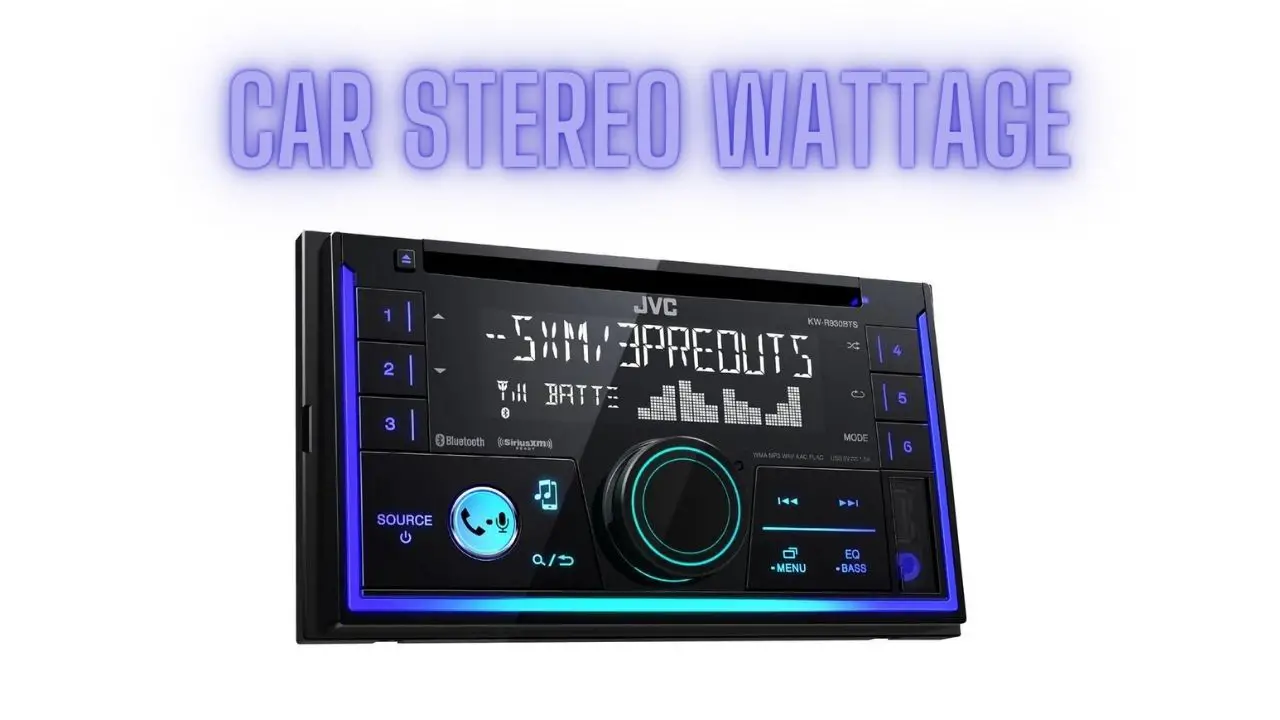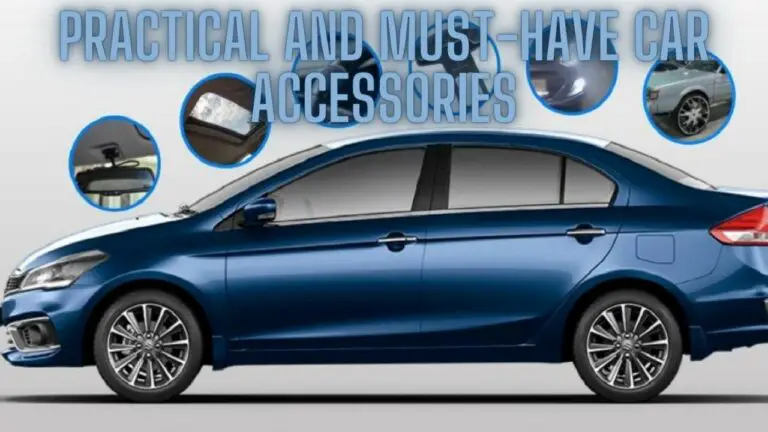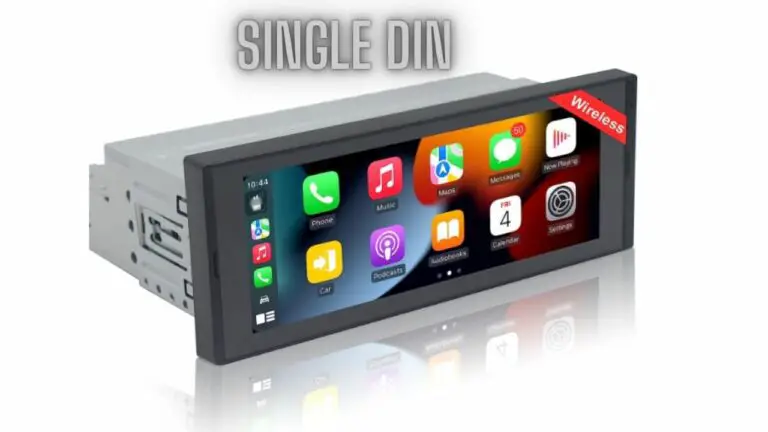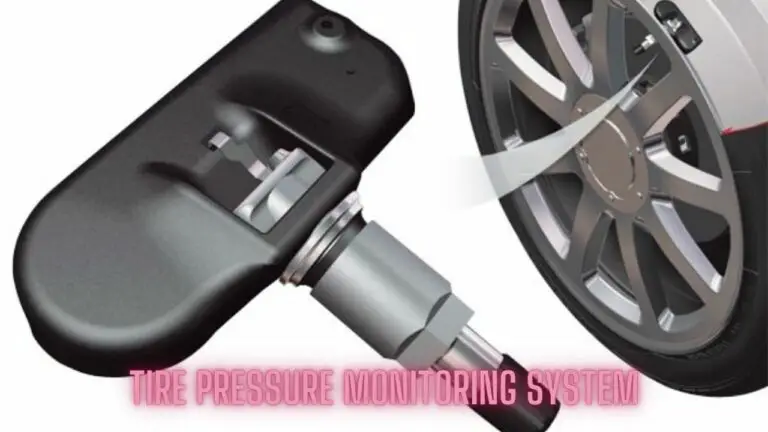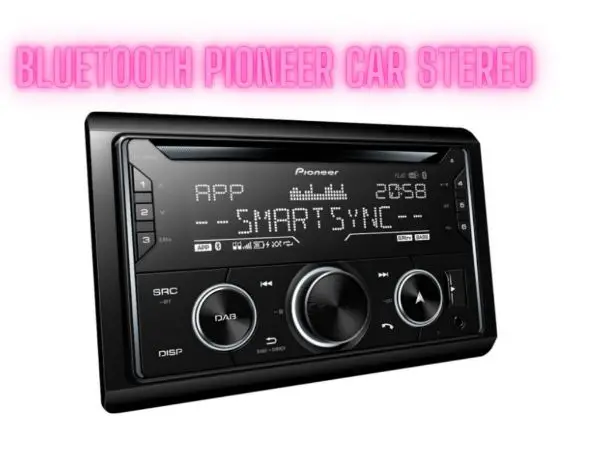Understanding Car Stereo Wattage: How Much Power Do You Need?
Introduction
Welcome to the ultimate guide to understanding car stereo wattage! Whether you’re a seasoned audiophile or a newcomer to the world of car audio, one thing is certain: wattage plays a crucial role in the performance and sound quality of your car stereo system.
In this comprehensive guide, we’ll dive deep into the realm of car stereo wattage, exploring everything from the basics of wattage to advanced considerations for optimizing your audio setup. By the end, you’ll have the knowledge and confidence to select the right wattage for your car stereo needs and achieve the audio experience you’ve always dreamed of.
Understanding Wattage
In this section, we’ll delve into the fundamental concepts of wattage and its significance in the realm of car stereo systems.
What is Wattage?
Wattage, measured in watts (W), is a unit of power that represents the rate of energy transfer or consumption. In the context of car stereo systems, wattage refers to the electrical power delivered to speakers by amplifiers or head units.
RMS vs. Peak Power
Two common wattage ratings you’ll encounter are RMS (Root Mean Square) power and peak power. RMS power indicates the continuous, average power output that a speaker or amplifier can sustain over time without distortion. Peak power, on the other hand, represents the maximum power output that a component can handle for short bursts, often during transient peaks in music.
While peak power can be useful for understanding a component’s maximum capabilities, RMS power is a more reliable measure of its continuous performance and suitability for everyday use.
Impedance and Wattage
Impedance, measured in ohms (Ω), is another crucial factor to consider when evaluating wattage requirements. Impedance represents the opposition to the flow of electrical current and varies between speakers and amplifiers. Matching the impedance of speakers to the output impedance of amplifiers ensures efficient power transfer and optimal performance.
Higher impedance speakers typically require more power to achieve the same volume level as lower impedance speakers. Therefore, understanding the impedance characteristics of your components is essential for determining the appropriate wattage for your car stereo system.
Throughout this section, we’ll explore these concepts in greater detail, providing you with the knowledge and tools to make informed decisions when selecting and configuring wattage for your car audio setup. So let’s dive deeper into the world of car stereo wattage and unlock the potential of your audio system!
Factors Influencing Wattage Requirements
Determining the appropriate wattage for your car stereo system involves considering various factors that influence power requirements. In this section, we’ll explore these factors in detail to help you make informed decisions when selecting components and configuring your audio setup.
1. Speaker Sensitivity
Speaker sensitivity, often expressed in decibels (dB) at 1 watt per 1 meter (dB/W/m), indicates how efficiently a speaker converts electrical power into sound. Speakers with higher sensitivity ratings require less power to produce the same volume level as speakers with lower sensitivity ratings. Understanding the sensitivity of your speakers is crucial for optimizing wattage requirements and achieving desired sound levels without overdriving amplifiers.
2. Speaker Size
The physical size of speakers can also impact wattage requirements. Larger speakers generally have greater surface area and can move more air, potentially producing louder sound with less power compared to smaller speakers. However, the efficiency and design of speakers also play significant roles in determining their wattage needs.
3. Amplifier Efficiency
Amplifier efficiency refers to the ability of an amplifier to convert electrical power into audio output without wasting energy as heat. Higher efficiency amplifiers can deliver more sound per watt of input power, resulting in improved performance and reduced power consumption. When selecting amplifiers for your car stereo system, consider factors such as class (e.g., Class A, Class AB, Class D) and efficiency ratings to ensure optimal power utilization.
4. Listening Environment
The acoustic characteristics of your vehicle’s interior environment can influence wattage requirements. Factors such as cabin size, interior materials, and ambient noise levels affect the perceived loudness and clarity of audio playback. In noisy environments or larger vehicles, higher wattage systems may be necessary to overcome background noise and deliver immersive sound experiences.
By carefully considering these factors and their interactions, you can determine the ideal wattage requirements for your car stereo system. In the following sections, we’ll explore strategies for calculating total wattage needs and matching components to achieve optimal performance. So buckle up, and let’s continue our journey into the world of car audio wattage!
Car Stereo Components
A car stereo system comprises several key components, each playing a vital role in delivering high-quality audio playback. Understanding the function and characteristics of these components is essential for designing and optimizing your car audio setup.
1. Head Unit (Receiver)
The head unit serves as the central control unit of the car stereo system, responsible for receiving audio signals from various sources and sending them to amplifiers and speakers. Modern head units feature a range of functionalities, including radio tuning, CD playback, USB connectivity, Bluetooth streaming, and auxiliary inputs. When selecting a head unit, consider factors such as audio quality, compatibility with other components, and user interface features.
2. Speakers
Speakers are transducers that convert electrical signals into sound waves, allowing you to hear music and audio content in your vehicle. Car speakers come in various sizes, configurations, and designs, including coaxial (full-range) speakers and component speakers with separate tweeters, midrange drivers, and woofers. Speaker performance is influenced by factors such as sensitivity, frequency response, power handling capacity, and impedance.
3. Amplifiers
Amplifiers amplify the electrical signals from the head unit to drive the speakers with sufficient power for optimal audio performance. Car amplifiers come in different classes (e.g., Class A, Class AB, Class D) and configurations (e.g., mono, 2-channel, 4-channel), each offering unique advantages in terms of efficiency, power output, and sound quality. Amplifiers play a crucial role in determining the volume, clarity, and dynamics of your car audio system.
4. Subwoofers
Subwoofers are specialized speakers designed to reproduce low-frequency bass sounds with impact and depth, enhancing the overall audio experience and adding dimension to music playback. Car subwoofers come in various sizes and configurations, including enclosed subwoofers, powered subwoofers, and component subwoofers with separate enclosures and amplifiers. When integrating subwoofers into your car stereo system, consider factors such as enclosure type, power handling capacity, and compatibility with amplifiers and speakers.
By carefully selecting and configuring these components, you can create a customized car stereo system tailored to your preferences and listening environment. In the following sections, we’ll explore how to calculate total wattage requirements and optimize component matching for optimal audio performance. So let’s continue our journey into the world of car audio wattage!
Calculating Total Wattage Requirements
Determining the total wattage requirements for your car stereo system involves assessing the power needs of each component and ensuring compatibility between amplifiers, speakers, and other audio equipment. Here’s a step-by-step guide to help you calculate the total wattage for your setup:
1. Determine Speaker Power Requirements:
- Check Speaker Power Handling: Review the specifications of your speakers to identify their RMS power handling capacity. This value indicates the maximum continuous power that the speakers can handle without damage.
- Consider Sensitivity Ratings: Take into account the sensitivity ratings of your speakers, which indicate how efficiently they convert electrical power into sound. Higher sensitivity speakers require less power to achieve the same volume level as speakers with lower sensitivity ratings.
2. Calculate Amplifier Power Output:
- Select Amplifier Power Rating: Choose amplifiers with power ratings that match or exceed the RMS power handling capacity of your speakers. Ensure compatibility between amplifier impedance ratings and speaker impedance for optimal performance.
- Consider System Configuration: If you’re using multiple amplifiers or a combination of amplifiers and head unit power, calculate the total power output from all sources to determine the overall wattage available to drive your speakers.
3. Account for Subwoofer Power Requirements:
- Assess Subwoofer Power Handling: Evaluate the RMS power handling capacity of your subwoofers to ensure they can handle the output power from your amplifiers without distortion or damage.
- Match Subwoofer and Amplifier Power: Select amplifiers that can deliver sufficient power to drive your subwoofers to their full potential, considering factors such as enclosure type, impedance, and desired bass levels.
4. Add Total Power Requirements:
- Sum Up Component Power Ratings: Calculate the total power requirements by adding the RMS power ratings of all speakers and subwoofers in your system. This total represents the combined wattage needed to achieve desired volume levels and sound quality.
5. Consider Head Unit Power Output:
- Factor in Head Unit Power: If your head unit includes built-in amplification, consider its power output capabilities when calculating total wattage requirements. While head unit power can supplement amplifier power, it may not provide sufficient wattage for high-performance audio systems.
By following these steps and carefully assessing the power needs of each component in your car stereo system, you can calculate the total wattage requirements and ensure proper matching between amplifiers, speakers, and other audio equipment. In the next section, we’ll explore strategies for optimizing component matching and achieving optimal audio performance.
Common Wattage Ratings and Recommendations
When it comes to selecting wattage for your car stereo system, it’s essential to consider your listening preferences, vehicle size, and desired sound quality. Here are some common wattage ratings and recommendations to help guide your decision-making process:
1. Entry-Level Systems (50-200 watts RMS):
- Ideal for casual listeners or budget-conscious setups.
- Suitable for smaller vehicles or low-volume listening environments.
- Provides adequate power for factory replacement speakers or basic aftermarket upgrades.
- Amplifiers in this range can deliver sufficient wattage for clear, balanced sound without overwhelming factory head units.
2. Mid-Range Systems (200-500 watts RMS):
- Offers a balance between performance and affordability.
- Suitable for most vehicles and moderate listening levels.
- Provides enhanced power for aftermarket speakers, component systems, and mid-range amplifiers.
- Delivers increased clarity, dynamics, and bass response compared to entry-level setups.
3. High-End Systems (500+ watts RMS):
- Designed for audiophiles and enthusiasts seeking premium sound quality.
- Suitable for larger vehicles or high-output audio environments.
- Provides ample power for high-performance speakers, subwoofers, and multi-channel amplifiers.
- Delivers superior dynamics, detail, and bass impact for immersive listening experiences.
Recommendations:
- Match Amplifier Power to Speaker Ratings: Ensure that your amplifier’s RMS power output matches or slightly exceeds the RMS power handling capacity of your speakers to prevent underpowering or overdriving.
- Consider Subwoofer Power Needs: Allocate sufficient wattage for subwoofers to reproduce low-frequency bass with impact and clarity, taking into account factors such as enclosure type, impedance, and desired SPL (Sound Pressure Level).
- Balance Power Distribution: Distribute power effectively across speakers, subwoofers, and other audio components to achieve a well-balanced soundstage with consistent volume levels and frequency response.
- Quality Over Quantity: Focus on the quality of amplification rather than solely relying on high wattage ratings. Look for amplifiers with efficient designs, low distortion, and clean power delivery to maximize sound quality and minimize electrical strain on your vehicle’s electrical system.
By selecting wattage ratings and configurations that align with your listening preferences and system requirements, you can create a car stereo setup that delivers the audio performance and enjoyment you desire. In the following sections, we’ll explore additional considerations for optimizing wattage efficiency and maximizing the potential of your car audio system.
Wattage and Sound Quality
The relationship between wattage and sound quality in a car stereo system is crucial for achieving optimal audio performance. While wattage influences the volume and dynamics of your audio playback, it’s essential to understand how power output impacts sound quality:
1. Balanced Power Distribution:
- Properly matching amplifier power to speaker ratings ensures efficient power transfer and prevents underpowering or overdriving, which can lead to distortion and speaker damage.
- Distributing power evenly across speakers and subwoofers helps maintain a balanced soundstage with consistent volume levels and frequency response throughout the audio spectrum.
2. Clarity and Detail:
- Adequate wattage allows speakers to reproduce audio signals accurately, preserving the clarity, detail, and nuance of the original recordings.
- Higher wattage systems can deliver improved signal-to-noise ratios, minimizing background noise and enhancing overall sound quality, particularly in quieter passages or at lower volume levels.
3. Dynamics and Impact:
- Higher wattage amplifiers provide greater headroom and dynamic range, allowing speakers to reproduce transient peaks and musical dynamics with greater impact and realism.
- Subwoofers benefit from higher wattage amplification, enabling them to reproduce low-frequency bass notes with authority and depth, enhancing the overall immersive experience.
4. Distortion and Compression:
- Insufficient power or amplifier clipping can lead to distortion and compression, degrading sound quality and diminishing the fidelity of audio playback.
- Properly matched wattage ensures that amplifiers operate within their linear range, minimizing distortion and preserving the integrity of the audio signal.
5. Efficient Power Utilization:
- Efficient amplifier designs, such as Class D amplifiers, maximize power utilization and minimize heat dissipation, ensuring clean and reliable power delivery to speakers.
- Quality components and wiring help minimize electrical resistance and impedance mismatches, optimizing power transfer and minimizing signal loss for improved sound quality.
6. Listener Preferences:
- Ultimately, the ideal wattage for sound quality depends on individual listener preferences, listening habits, and acoustic environments.
- Some listeners may prioritize clarity and accuracy, while others may prefer a more dynamic and impactful sound signature. Adjusting amplifier power and speaker configurations can tailor the audio experience to suit personal preferences.
By understanding the relationship between wattage and sound quality, you can optimize your car stereo system to deliver the audio performance and listening experience you desire. Whether you prioritize clarity, dynamics, or impact, properly matched wattage and high-quality components are essential for achieving exceptional sound quality on the road.
Installation Tips for Maximizing Wattage Efficiency
Efficient installation is crucial for maximizing the wattage efficiency of your car stereo system, ensuring optimal power delivery and sound quality. Here are some tips to help you achieve the best performance from your components:
1. Proper Wiring and Grounding:
- Use high-quality, low-resistance wiring for all connections between components to minimize power loss and signal degradation.
- Ensure that wiring is correctly sized and routed to prevent voltage drop and interference, especially in larger systems with multiple amplifiers and speakers.
- Ground amplifiers and other components securely to a clean, unpainted metal surface near the vehicle’s chassis ground point to minimize ground loop noise and electrical interference.
2. Speaker Placement and Enclosure Design:
- Position speakers and subwoofers strategically to optimize sound dispersion and minimize acoustic anomalies, such as standing waves and reflections.
- Select appropriate speaker enclosures or mounting locations that complement the acoustic characteristics of your vehicle’s interior and maximize bass response and clarity.
- Seal speaker enclosures properly to prevent air leaks and optimize subwoofer performance, especially in ported or vented designs.
3. Amplifier Tuning and Equalization:
- Use a calibrated measurement microphone and real-time analyzer (RTA) to tune amplifier settings and equalization parameters for optimal frequency response and tonal balance.
- Adjust amplifier gain, crossover points, and equalization settings to match the characteristics of your speakers and subwoofers and compensate for room acoustics and vehicle noise.
- Take advantage of built-in DSP (Digital Signal Processing) features in modern amplifiers to fine-tune audio performance and correct for frequency response anomalies.
4. Electrical System Upgrades:
- Upgrade your vehicle’s electrical system, including alternator, battery, and wiring, to handle the increased power demands of high-wattage audio systems.
- Install a high-output alternator and supplemental battery to provide sufficient current for amplifiers and prevent voltage drop during heavy load conditions.
- Use a voltage stabilizer or capacitor bank to buffer electrical fluctuations and maintain stable voltage levels, especially during transient peaks in music playback.
5. Thermal Management:
- Ensure adequate ventilation and cooling for amplifiers and other heat-generating components to prevent thermal shutdown and prolong component lifespan.
- Install amplifier heatsinks and cooling fans to dissipate heat effectively and maintain optimal operating temperatures, especially in confined or poorly ventilated spaces.
6. Professional Installation and Calibration:
- Consider hiring a professional car audio installer or technician to design and install your car stereo system, especially for complex or high-end setups.
- Schedule regular maintenance and calibration sessions to ensure that your system continues to operate at peak efficiency and deliver optimal sound quality over time.
By following these installation tips and best practices, you can maximize the wattage efficiency of your car stereo system, optimize power delivery, and enjoy exceptional sound quality on the road. Whether you’re a DIY enthusiast or seeking professional assistance, attention to detail and proper installation techniques are essential for achieving the best performance from your audio components.
Future Trends in Car Stereo Wattage
As automotive technology continues to evolve, several emerging trends are shaping the future of car stereo wattage and audio systems:
1. Integration with Vehicle Electronics:
- Future car stereo systems are expected to become more tightly integrated with vehicle electronics, leveraging advanced connectivity options and data interfaces for seamless operation.
- Integration with vehicle infotainment systems, navigation systems, and driver assistance features will enable enhanced functionality and user experience, including voice control and smart assistant integration.
2. High-Resolution Audio Support:
- As consumer demand for high-fidelity audio grows, car stereo systems will likely support high-resolution audio formats and playback capabilities, delivering studio-quality sound reproduction in the vehicle.
- Amplifiers with higher wattage ratings and improved signal processing will be required to accurately reproduce the dynamic range and detail of high-resolution audio recordings.
3. Power-Efficient Amplifier Designs:
- Future amplifiers are expected to feature more efficient designs and power management technologies to maximize wattage efficiency and minimize energy consumption.
- Class-D amplifiers and other advanced amplifier topologies will continue to gain popularity due to their high efficiency, compact size, and low heat dissipation.
4. Adaptive Audio Processing:
- Advanced signal processing algorithms and adaptive audio technologies will be integrated into car stereo systems to optimize sound quality based on vehicle acoustics, listening environment, and driver preferences.
- Adaptive equalization, room correction, and active noise cancellation features will enhance audio performance and mitigate acoustic challenges in the vehicle cabin.
5. Personalized Sound Profiles:
- Future car stereo systems may offer personalized sound profiles and user presets, allowing drivers and passengers to customize audio settings based on individual preferences and listening habits.
- Machine learning algorithms and biometric sensors may be used to automatically adjust audio parameters such as EQ, volume, and balance to suit the preferences of different occupants.
6. Enhanced Connectivity and Streaming Options:
- Car stereo systems will continue to evolve to support a wide range of connectivity options, including wireless streaming protocols, cloud-based music services, and smartphone integration.
- Seamless integration with mobile devices and streaming platforms will enable drivers to access their favorite music and audio content on the go, with minimal setup and configuration.
7. Sustainability and Environmental Considerations:
- Manufacturers will increasingly focus on developing eco-friendly materials and energy-efficient components for car stereo systems to minimize environmental impact and comply with regulatory standards.
- Power-saving features such as auto standby modes, energy-efficient amplifiers, and eco-friendly manufacturing processes will be prioritized to reduce carbon footprint and promote sustainability.
By embracing these future trends and innovations, car stereo wattage and audio systems will continue to evolve, delivering immersive sound experiences and advanced connectivity options for drivers and passengers alike. As technology advances, the possibilities for enhancing in-vehicle audio performance are virtually limitless, promising an exciting future for car audio enthusiasts and consumers.
Car Stereo Wattage FAQs
- What is car stereo wattage, and why is it important?
- Car stereo wattage refers to the amount of electrical power delivered to speakers by amplifiers or head units. It’s important because it directly influences the volume, clarity, and dynamics of your car audio system.
- What is the difference between RMS and peak power ratings?
- RMS (Root Mean Square) power represents the continuous, average power output that a speaker or amplifier can sustain over time without distortion. Peak power indicates the maximum power output that a component can handle for short bursts, often during transient peaks in music.
- How do I match amplifier wattage to speaker ratings?
- Ensure that the RMS power output of your amplifier matches or slightly exceeds the RMS power handling capacity of your speakers to prevent underpowering or overdriving. This ensures optimal performance and prevents damage to your speakers.
- Do I need a high-wattage car stereo system for good sound quality?
- Not necessarily. While higher wattage systems can provide increased volume and dynamic range, the quality of sound also depends on factors such as speaker quality, amplifier efficiency, and installation techniques. A well-matched and properly installed system with moderate wattage can still deliver excellent sound quality.
- What are some tips for optimizing wattage efficiency in my car stereo system?
- Use high-quality wiring and proper grounding techniques to minimize power loss. Position speakers strategically and use appropriate enclosures to optimize sound dispersion. Tune amplifiers and equalization settings for optimal performance. Consider upgrading your vehicle’s electrical system for increased power handling capacity.
- What are some future trends in car stereo wattage and audio systems?
- Future trends may include tighter integration with vehicle electronics, support for high-resolution audio formats, power-efficient amplifier designs, adaptive audio processing technologies, personalized sound profiles, enhanced connectivity options, and a focus on sustainability and environmental considerations.
- Where can I find professional assistance for designing and installing a car stereo system?
- You can consult with car audio specialists or professional installers who have experience in designing and installing custom car stereo systems. They can help assess your needs, recommend suitable components, and ensure proper installation for optimal performance.
Conclusion
In conclusion, understanding car stereo wattage is essential for creating an audio system that delivers the best possible sound quality and performance. Throughout this guide, we’ve explored the fundamentals of wattage, its impact on sound quality, and factors influencing wattage requirements in car stereo systems.
From entry-level setups to high-end audio configurations, selecting the right wattage for your components is crucial for achieving balanced sound reproduction, optimal volume levels, and dynamic audio playback. By considering factors such as speaker sensitivity, amplifier efficiency, and listening environment, you can tailor your car stereo system to suit your preferences and requirements.
Installation techniques such as proper wiring, speaker placement, and amplifier tuning are key to maximizing wattage efficiency and ensuring optimal power delivery to your audio components. Whether you’re a DIY enthusiast or seeking professional assistance, attention to detail and proper setup techniques are essential for achieving the best possible sound quality on the road.
As future trends in car audio technology continue to evolve, innovations such as integration with vehicle electronics, support for high-resolution audio, and personalized sound profiles promise to enhance the audio experience for drivers and passengers alike. By embracing these advancements and staying informed about emerging technologies, you can future-proof your car stereo system and enjoy immersive sound quality for years to come.
In summary, car stereo wattage plays a critical role in shaping the audio performance and listening experience in your vehicle. By applying the knowledge and insights gained from this guide, you can create a car audio setup that delivers exceptional sound quality, optimal power efficiency, and unparalleled enjoyment on every journey.

